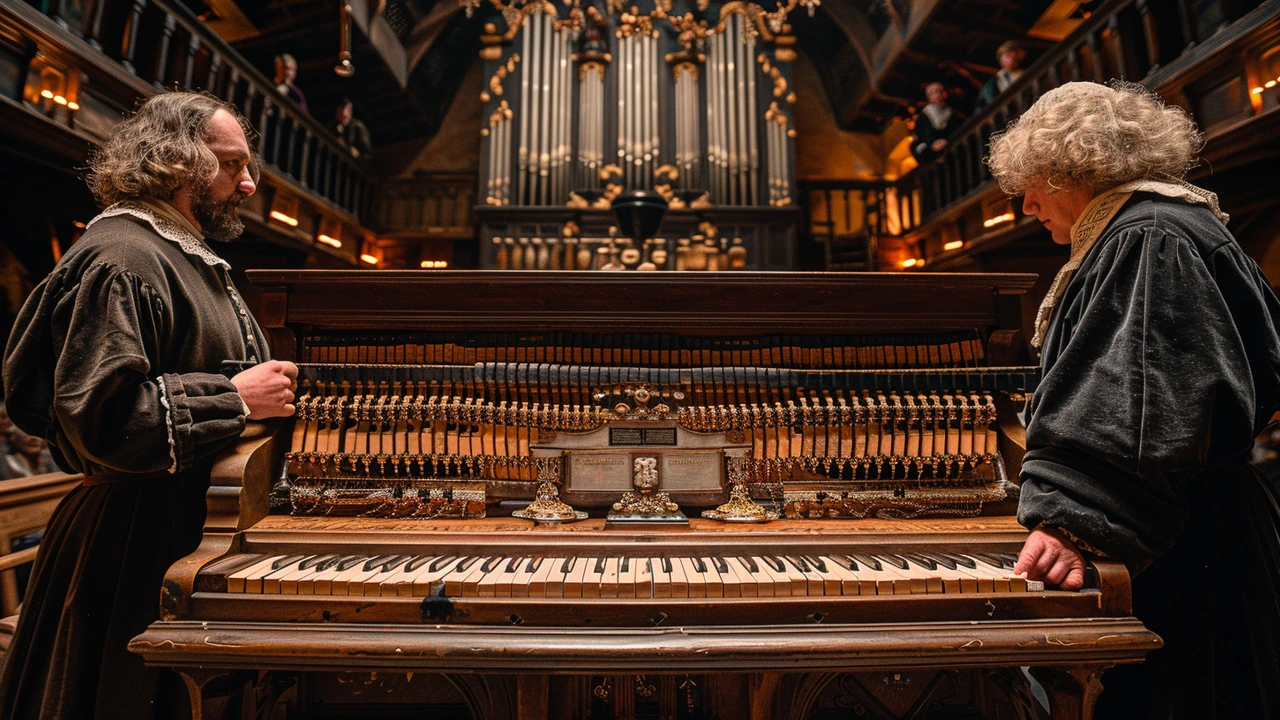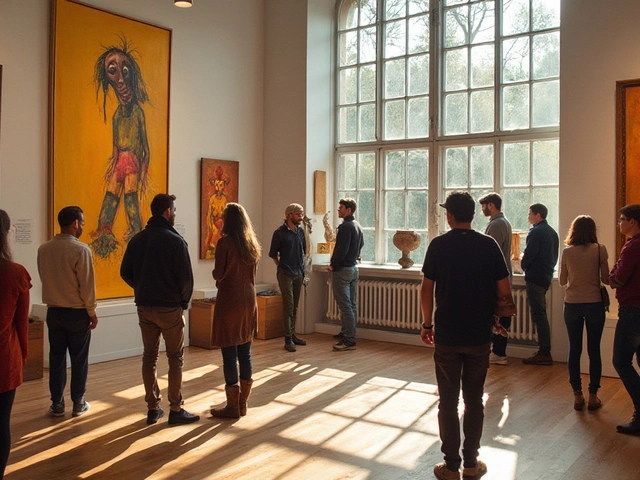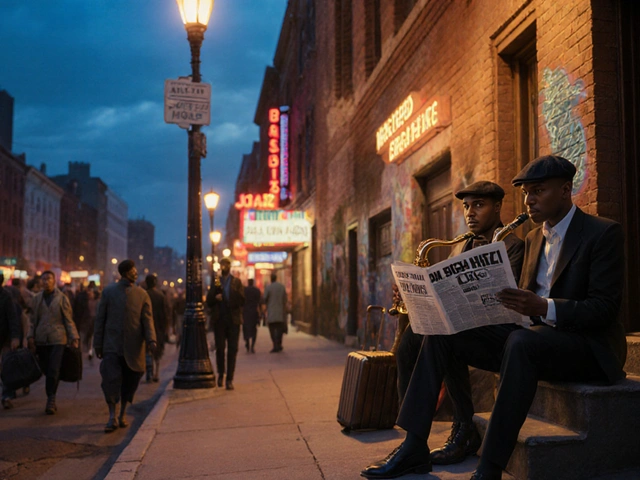The Baroque period was a fascinating era marked by rich detail, emotion, and grandeur in art, music, and architecture. Spanning from the late 16th century to the early 18th century, this period brought significant changes to cultural and artistic landscapes.
One of the hallmarks of the Baroque style is its dramatic use of light and shadow, bringing a sense of movement and life to paintings and sculptures. Artists of the time did not shy away from intense emotions and elaborate scenes, drawing viewers into a deeper connection with the work.
In architecture, the Baroque period introduced ornate designs with intricate decorations, grand staircases, and bold structures. These elements can be seen in some of the most famous buildings of the time, such as St. Peter's Basilica in Rome.
Music from the Baroque period is characterized by its richness and complexity, featuring composers like Johann Sebastian Bach and George Frideric Handel, who created compositions that continue to be celebrated today.
- Characteristics of the Baroque Style
- Influential Baroque Artists and Composers
- Impact on Architecture
- Legacy and Influence Today
Characteristics of the Baroque Style
The Baroque style, flourishing from the late 16th century to the early 18th century, is known for its dramatic use of light and shadow, which created a heightened sense of depth and emotion in art. One of the defining features is the technique called chiaroscuro, contrasting dark and light to bring out intense visual effects. Artists like Caravaggio mastered this, creating scenes that seemed to leap out of the canvas.
Another striking characteristic of the Baroque style is the emphasis on movement and theatricality. Look closely at Baroque paintings and sculptures; you’ll often find swirling forms, dynamic poses, and a sense of ongoing action. This is not just limited to human figures but extends to the swirling clouds and dramatic backgrounds, as seen in the works of Peter Paul Rubens and Gian Lorenzo Bernini. The purpose of these elements was to stir the viewer's emotions, inviting them to feel the intensity of the moment.
In addition to movement, Baroque art is rich with ornate details and elaborate compositions. Backgrounds teeming with intricate decorations, lush landscapes, and bustling scenes are common. This focus on detail can be traced back to the Baroque belief in the grandeur and complexity of divine creation. Every element in a Baroque piece serves to glorify the subject, whether religious or mythological. An example is the grandiose ceiling frescoes by Giovanni Battista Gaulli in the Church of the Gesù in Rome.
The Baroque period was also a time of experimentation with new techniques in other forms of art, including music. Composers like Antonio Vivaldi and Johann Sebastian Bach introduced elements such as the contrast between solo instruments and a full orchestra, and the use of ornamentation to add expressive detail to their music. The Baroque style in music is described as being elaborate, ornate, and expressive, mirroring the visual art of the period.
One particularly fascinating aspect of the Baroque was its approach to architecture. Baroque architecture is characterized by grandeur and extravagant forms. Buildings from this period often feature dramatic central projections, bold decorations, and dynamic shapes. A defining example is the Palace of Versailles, where the extensive use of mirrors, gold leaf, and detailed gardens all contribute to an overall sense of opulence and splendour.
“All of the elements in Baroque style work together to overwhelm the senses and create emotional experiences.” — David Watkin, historian and authorThe use of color in Baroque art is another notable characteristic. Artists often employed rich, vibrant colors to highlight certain elements and create emotional intensity. Deep reds, golds, and blues contrast sharply with the darker tones in the background, pulling the viewer's eye to the main action or subject.
Table settings, clothing, and even furniture from the Baroque period follow these same aesthetic principles. They exhibit dynamic compositions, bold colors, and intricate details, reflecting the era's overall artistic philosophy. These elements combined to create a style that was both extravagant and engaging, drawing in viewers and listeners and leaving them with a lasting impression of the Baroque's grandeur.
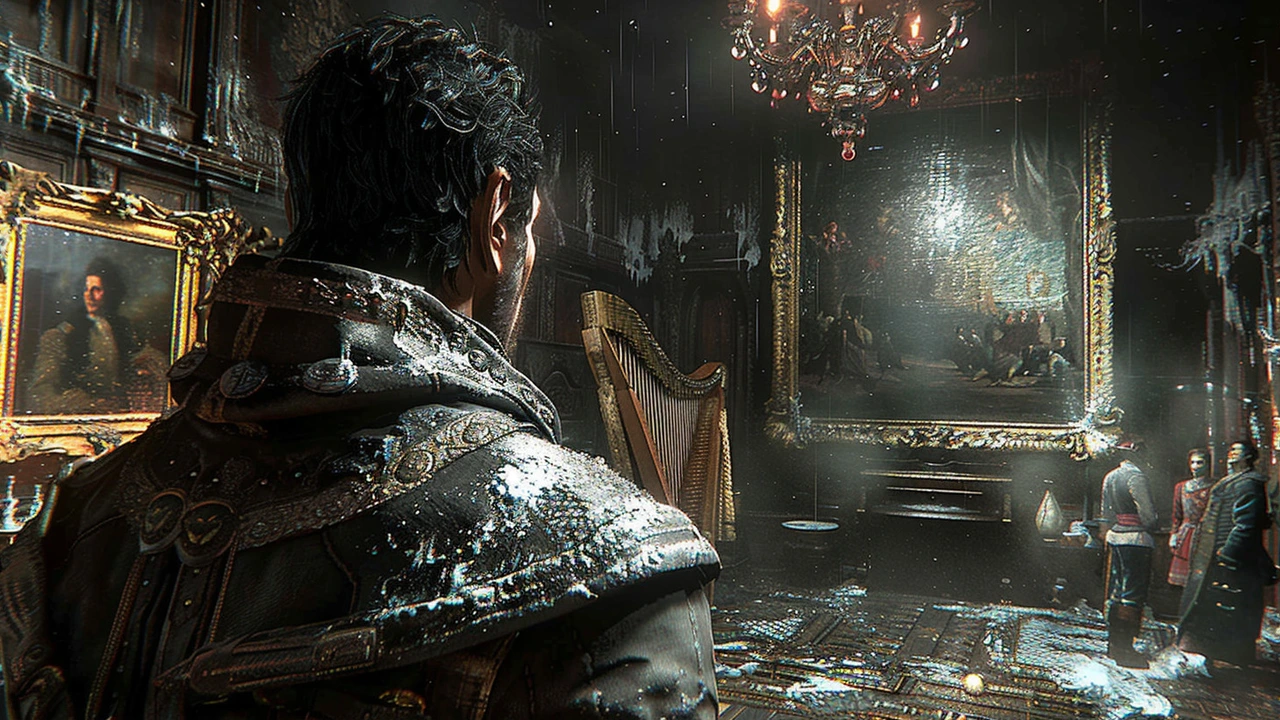
Influential Baroque Artists and Composers
The Baroque period was rich with artists and composers whose works had a lasting impact on art and music. One of the most notable figures in Baroque art is Caravaggio. His dramatic use of light and shadow, a technique known as chiaroscuro, brought an intense realism and emotional depth to his paintings. Caravaggio's works, such as "The Calling of St. Matthew," are celebrated for their theatricality and boldness, which captivated audiences of his time.
Another influential artist of the Baroque era is Peter Paul Rubens, renowned for his dynamic compositions and vibrant use of color. Rubens' paintings often depicted themes of mythology, religion, and history, merging classical and contemporary styles. He was also a diplomat, and his travels across Europe influenced his art, making him a pivotal figure in the Baroque movement.
In the realm of music, Johann Sebastian Bach stands out as a giant of the Baroque period. Bach's compositions, including the Brandenburg Concertos and the Well-Tempered Clavier, showcase his masterful use of counterpoint and harmony. His music remains influential, studied, and performed by musicians around the world. Another key composer of this era is George Frideric Handel, known for his operas, oratorios, and concertos. Handel's "Messiah" is a monumental work that continues to be performed yearly, particularly around the Christmas season.
"Bach's music knows neither date nor nationality." – Pablo Casals
Claudio Monteverdi, often credited with bridging the Renaissance and Baroque periods, revolutionized opera with his work "L'Orfeo." This opera is considered one of the earliest examples of the genre and set the stage for future developments in operatic storytelling and composition. Monteverdi's innovations in expressing human emotion through music were groundbreaking, influencing subsequent generations of composers.
In Spain, Diego Velázquez emerged as an essential Baroque painter known for his incredible realism and intricate attention to detail. His masterpiece "Las Meninas" is a study in perspective, capturing an intimate moment in the Spanish royal court. Velázquez's ability to convey texture and depth made his works truly captivating.
The Baroque period also saw the rise of female artists like Artemisia Gentileschi. Her powerful narratives and mastery of chiaroscuro echoed Caravaggio's influence. Gentileschi's "Judith Slaying Holofernes" is a striking and vivid depiction that highlights her skill and distinctive voice in a male-dominated field.
Collectively, these artists and composers helped shape the cultural fabric of the Baroque period, leaving a legacy that resonates today. Their innovations in technique and expression pushed the boundaries of their respective fields, contributing to the dynamic and evolving landscape of art and music.
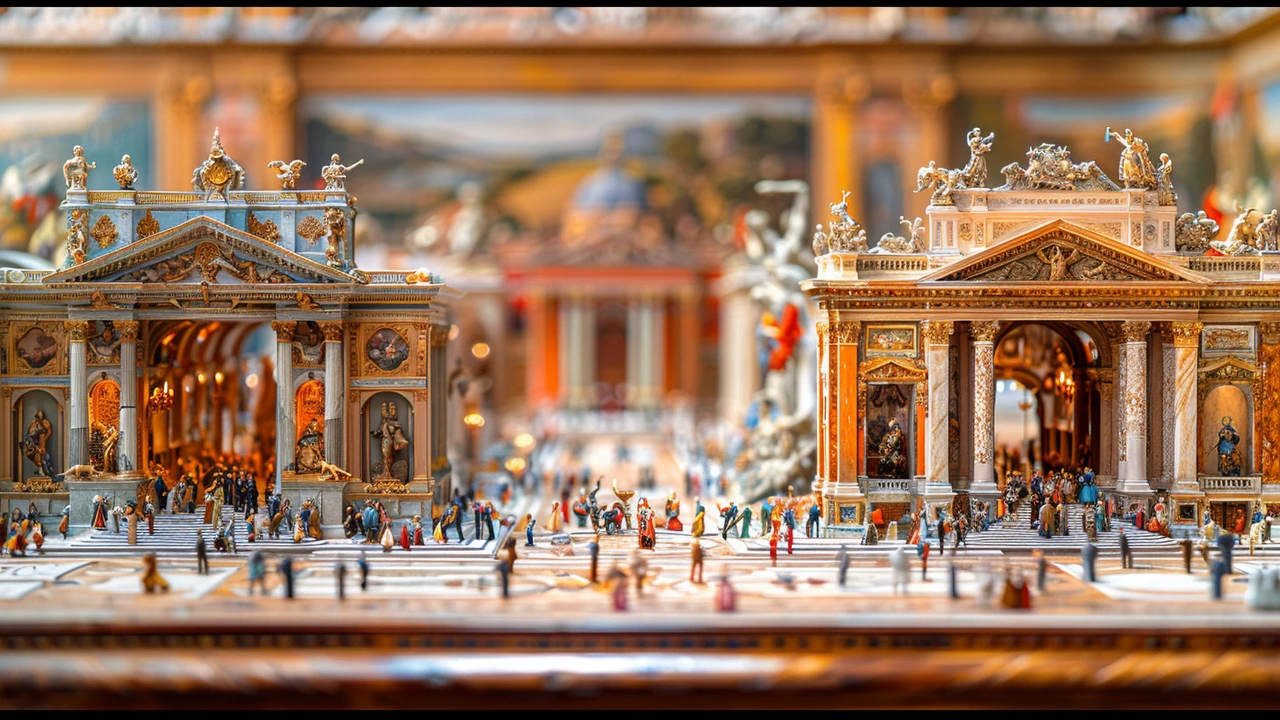
Impact on Architecture
The Baroque period left an indelible mark on architecture, giving rise to some of the most iconic buildings ever constructed. Baroque architecture is characterized by its grandeur, drama, and exuberance, utilizing bold forms, dynamic curves, and sumptuous decorations. One of the most stunning examples of Baroque architecture is St. Peter's Basilica in Vatican City, designed by geniuses like Gian Lorenzo Bernini, Carlo Maderno, and Michelangelo.
Baroque architects embraced a sense of theater in their designs, incorporating sweeping staircases, large colonnades, and expansive domes. These elements were intended to evoke awe and admiration, drawing viewers' eyes upwards and creating a powerful emotional impact. The churches and palaces of this period often featured highly decorated facades, lavish interiors, and the innovative use of light to create both mystical and dramatic effects.
In addition to religious buildings, the Baroque period also saw the rise of opulent palaces, such as the Palace of Versailles in France. Designed by Louis Le Vau and Jules Hardouin-Mansart, Versailles epitomizes Baroque opulence with its extensive gardens, Hall of Mirrors, and elaborate fountains. This palace was not just a royal residence but also a statement of absolute power and grandeur.
One of the remarkable aspects of Baroque architecture is the fusion of various artistic elements. Sculptures, paintings, and gardens were seamlessly integrated into architectural designs, creating a cohesive and immersive experience. This holistic approach can be seen in structures like the Trevi Fountain in Rome, which combines water, sculpture, and architecture into a single powerful composition.
Integration of Art and Architecture
The Baroque period was distinct in its integration of various art forms into architecture. Ceiling frescoes, painted by masters like Pietro da Cortona and Giovanni Battista Tiepolo, adorned many Baroque churches and palaces, adding to the immersive experience. These paintings depicted dramatic scenes from mythology and religion, enhancing the emotional and theatrical atmosphere of the spaces.
"Baroque art aims to evoke viewers' emotions and create a sense of awe and wonder," notes art historian Michael Snodin, emphasizing the period's focus on drama and splendor.
Incorporating sculpture into architectural frameworks was another hallmark of Baroque design. Sculptors like Bernini often collaborated with architects to create visually stunning pieces that complemented the overall design of the building. One of Bernini’s masterpieces, the Ecstasy of Saint Teresa, is a sublime example of this collaboration, where the sculpture becomes an integral part of the church's interior.
The impact of Baroque architecture wasn’t confined to Europe; it extended across the globe. Spanish Baroque, for instance, made its way to Latin America, where it merged with local traditions to create unique styles. Churches such as the San Francisco Church in Lima, Peru, exhibit the elaborate details and bold ornamentation typical of Baroque architecture, adapted to the New World's context.
Today, Baroque architecture continues to inspire and influence modern design. Architects and designers often draw upon the Baroque emphasis on grandeur and dramatic effect to create spaces that captivate and inspire. Understanding the principles of Baroque architecture provides valuable insights into the enduring appeal of this magnificent era.

Legacy and Influence Today
The influence of the Baroque period is still vividly present in modern art, music, and architecture. The elements of grandeur, drama, and intricate detail from this era continue to inspire contemporary creators. In the world of art, many current artists draw upon the dramatic lighting and emotional intensity characteristic of Baroque paintings. They aim to evoke strong emotions and a sense of awe, much like masters such as Caravaggio and Rembrandt did in their time.
Modern architecture also carries the torch of Baroque influence with bold designs and elaborate details. You can see echoes of Baroque grandeur in the opulent facades and interiors of theatres, opera houses, and even some modern cathedrals. Places like the Palais Garnier in Paris, though built in the 19th century, demonstrate a clear continuation of Baroque architectural principles. The use of symmetry, decorative elements, and grand staircases all harken back to the Baroque era.
In music, the complexity and richness of Baroque compositions have never gone out of style. Composers such as Johann Sebastian Bach and George Frideric Handel remain staples in concert repertoires around the world. Their works are studied rigorously in musical academies and performed regularly, continuing to influence new generations of musicians. The intricate counterpoint and emotive melodies of Baroque music have found their way into modern genres, including film scores and even popular music.
Moreover, the idea of blending different art forms to create a holistic experience, a hallmark of the Baroque period, is seen in today’s multimedia installations and performances. Modern artists and directors achieve an immersive impact by combining music, visual art, and theater. This interdisciplinary approach mirrors the Baroque period's aim to overwhelm and captivate the audience with a total sensory experience.
"The Baroque period was an explosion of creativity that transcended the boundaries of art, music, and architecture. Its influence can still be felt today, not just in preservation efforts, but in the very fabric of our cultural expressions," notes art historian Dr. Emily Carr.
Additionally, the preservation and restoration of Baroque masterpieces, whether they are buildings, paintings, or pieces of music, form a crucial part of cultural heritage projects worldwide. Museums, concert halls, and historical sites dedicate significant resources to maintaining the splendor of Baroque creations, ensuring that they can be enjoyed by future generations.
The aesthetic principles of the Baroque period—emotion, movement, and grandeur—have long-lasting appeal. They have spurred the imaginations of countless artists, architects, and musicians, proving that the essence of the Baroque can transcend time and continue to enrich our world in countless ways.

